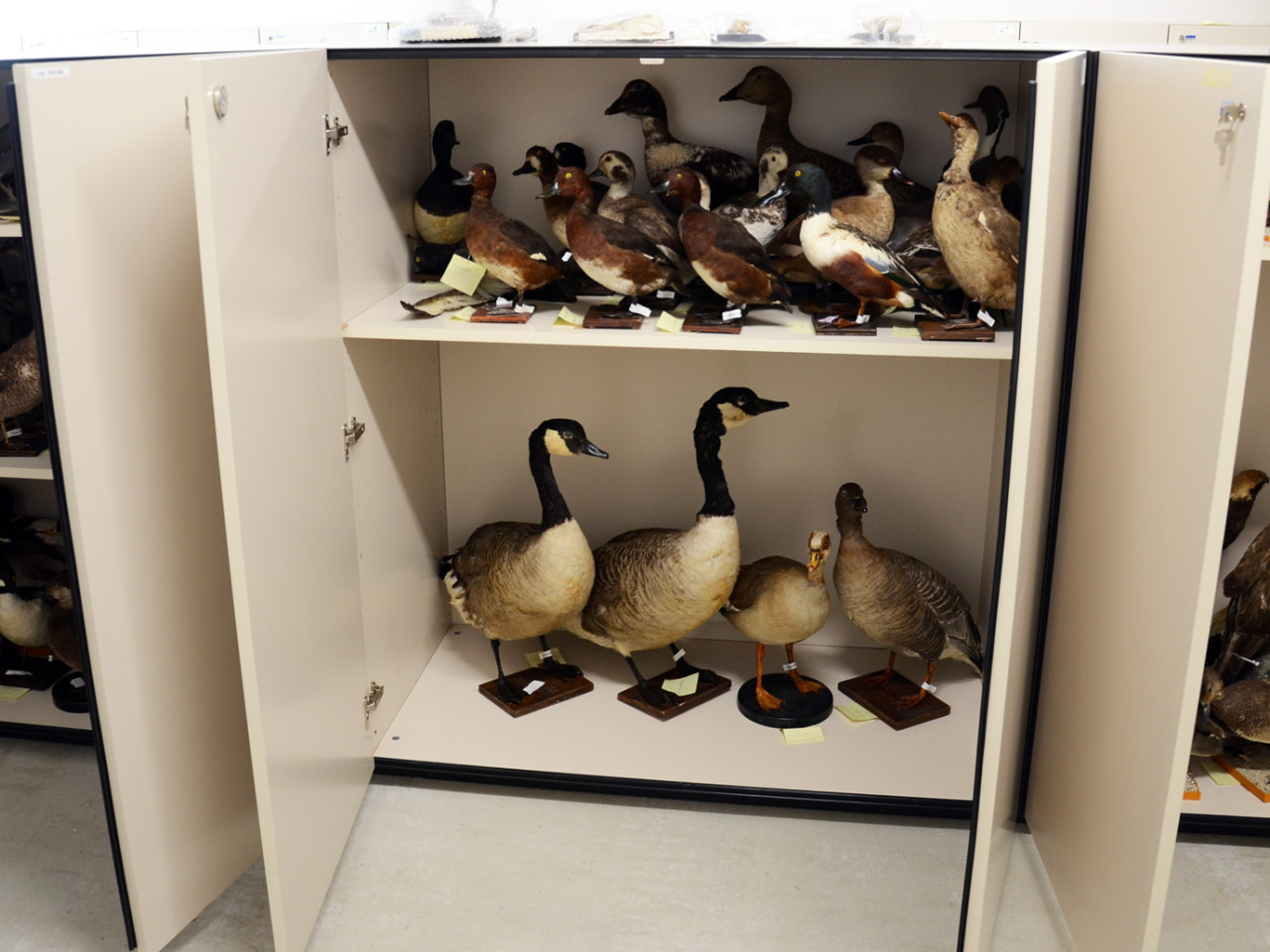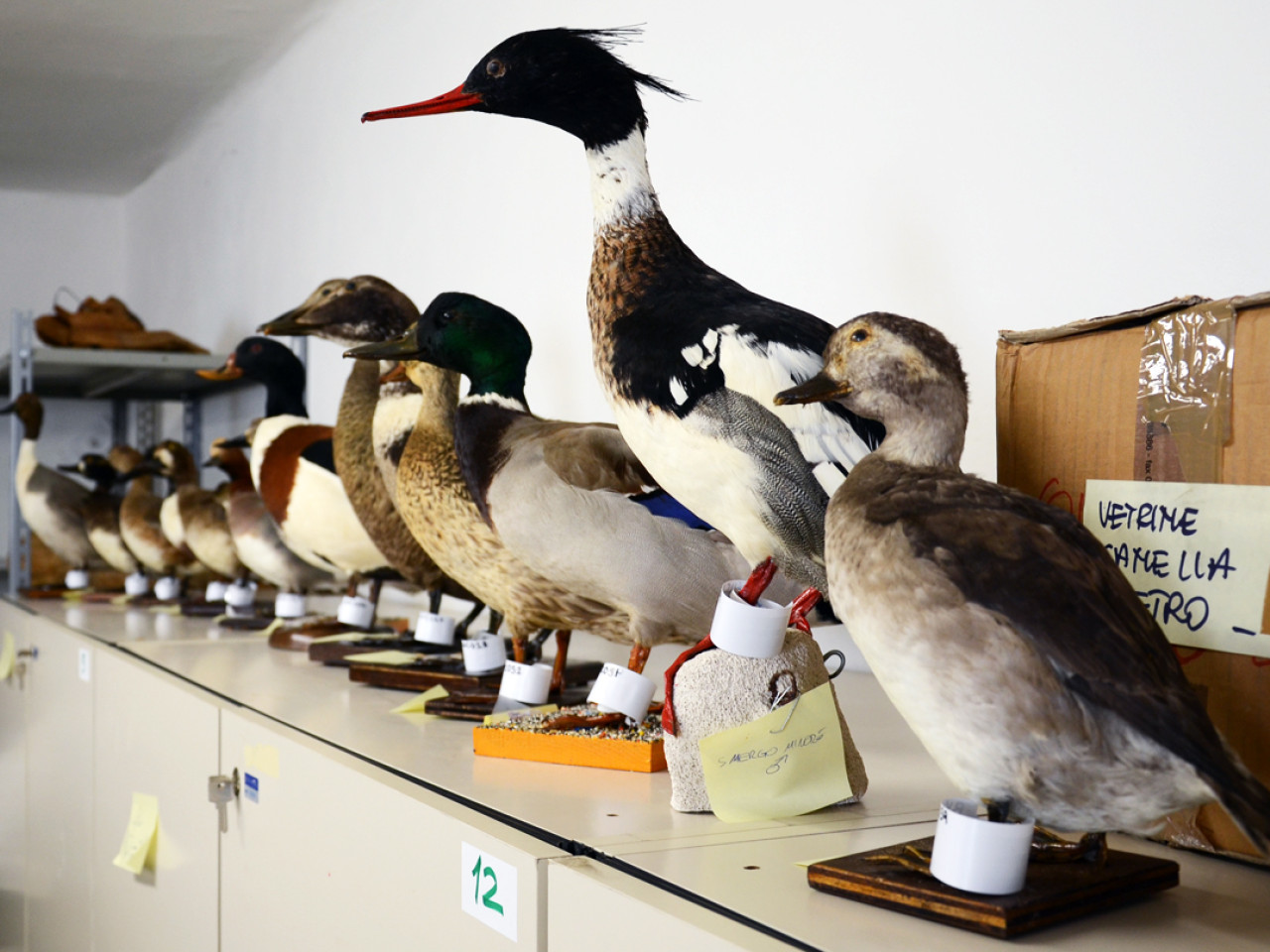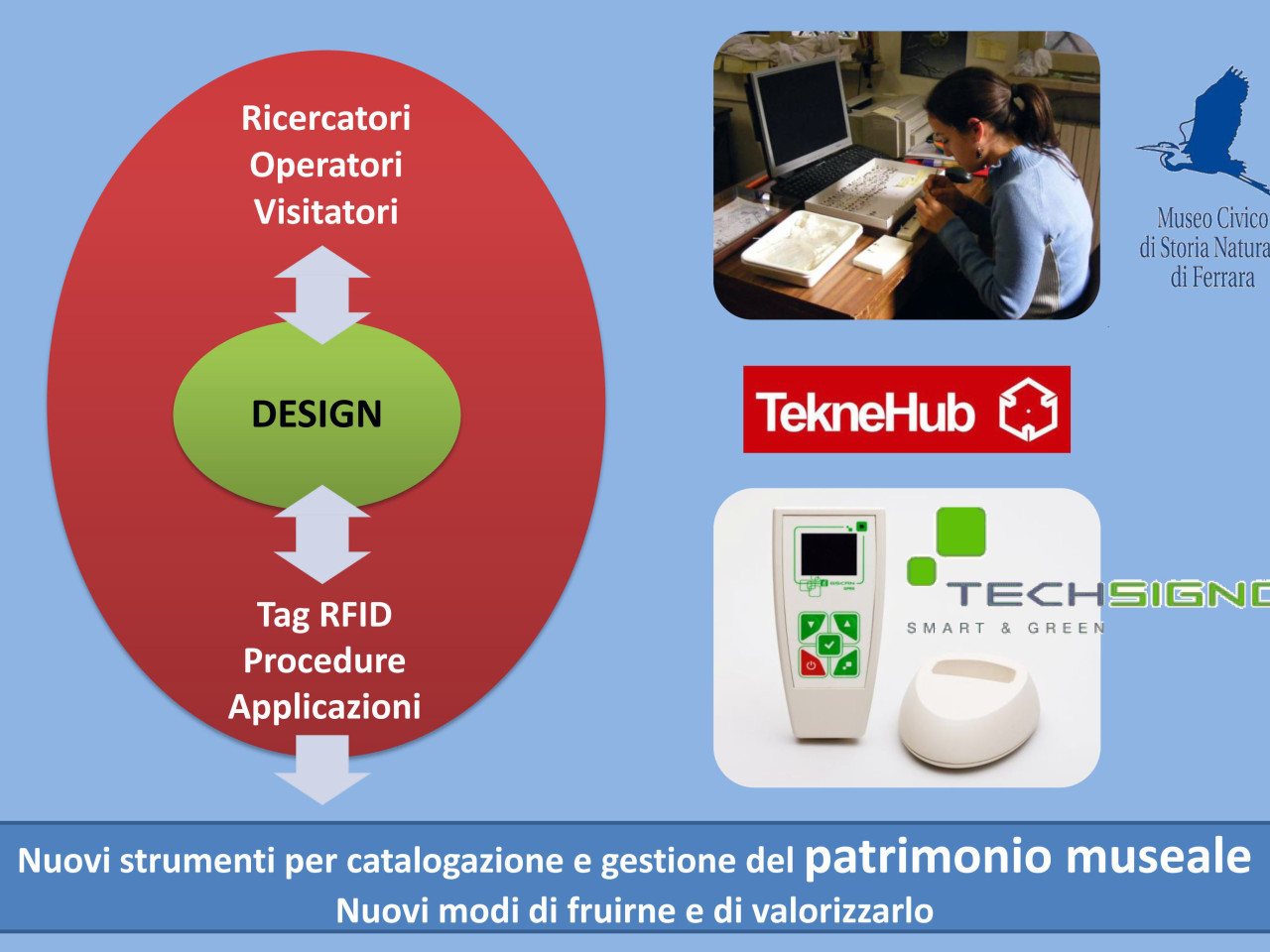TekneHub - Laboratory of the Ferrara Tecnopolo, in collaboration with the company Techsigno S.r.l., has tested and assessed the application of RFID (Radio Frequency Identification) technology to naturalistic collections. To date, the RFID technology has been applied to manage the Supply Chain in companies, for safeguarding works of art and historical buildings and for both food and health monitoring and traceability. Its application to a varied and sensitive heritage such as that of a Natural Science Museum requires special arrangements. The museum is dealing with collection management issues, e.g. the retrieval of assets in the depository, the difficulty of connecting the catalogue sheets to the assets of reference, the absence of useful devices for traceability of handled assets, conventional communication and staging methods that result in the museum having a small user base.
 Depository of the Town's Natural Science Museum of Ferrara - some specimens of the Ravani collection
Depository of the Town's Natural Science Museum of Ferrara - some specimens of the Ravani collection
The RFID technology applied to museum collections makes it possible to put in place a control system of the heritage housed by the Museum. Through suitable software and databases, handling of works/exhibits may be monitored and tracked, thus improving the logistics of the depository and exhibitions. It makes it possible to control the catalogue documentation and may be employed also for public use of the relevant information. The application to ornithological, geological-palaeontological and entomological collections represents an innovative aspect starting from the tag application substrate.
This is not merely technology transfer: the aim is not just to assess the applicability of this technology to Cultural Heritage, but also to develop and put forth new methodologies, devices and procedures based on thorough analysis of the peculiar issues in museum collection management. The experimentation of this application to historical-naturalistic collections considered - owing to the variety and amount of their materials - among the most complex from the management point of view, may lead to assured improvement if applied to the collections of other types of museums.
 Application of  tags to a group of waterfowl in the Ravani collection, property of the Town's Natura
Application of  tags to a group of waterfowl in the Ravani collection, property of the Town's Natura
Application of RFID tags to some collections of the Town's Natural Science Museum of Ferrara
The experimentation was conducted on some collections of the Town's Natural Science Museum of Ferrara, that differ in the nature of the asset and in management and organisation requirements. At present the museum has difficulties in identifying and searching for the assets in the depository; tracking Assets moved for loans, study, taxidermy, restoration, etc.; directly connecting the catalogue sheet and the relevant asset. The first step entailed entering the catalogue data of the collections in question into a database where a data column was created containing the required information for immediate recognition. This was transferred to a tag with adequate features to the type of asset and its preservation method (cabinet, freezer, alcohol, etc.) and the tag was applied to the asset. Adaptation of the handling software is under way to configure it to control and track assets for which the final exit is not entailed, but only movements to various areas inside the museum based on the operative chain the various exhibits undergo . The application of the devices to individual assets afforded substantial decrease in data management times, allowing the asset to be immediately controlled and tracked. An additional advantage was that the asset's handling history and the identity of the operator remains recorded in the device.
Techsigno S.r.l.,
Museo Civico di Storia Naturale di Ferrara
An estimation of the economic advantages and competitiveness the research might afford, and of the forms in which it might be articulated and optimised from a commercial perspective, is under way.
 Application of RFID tag devices to manage the Museum's collections
Application of RFID tag devices to manage the Museum's collections

